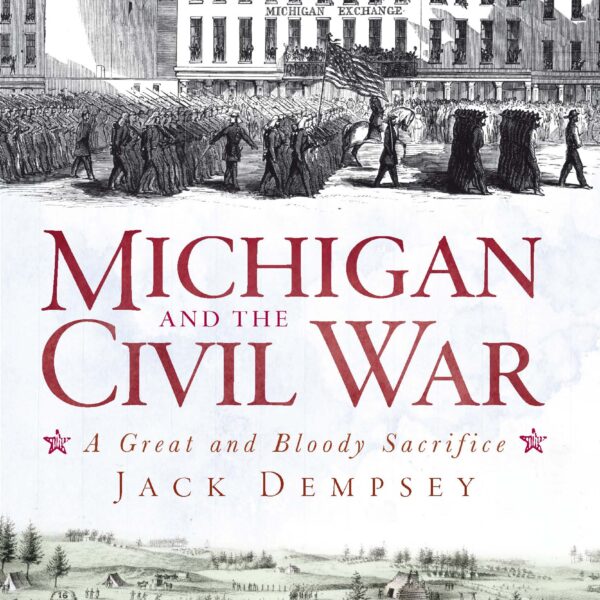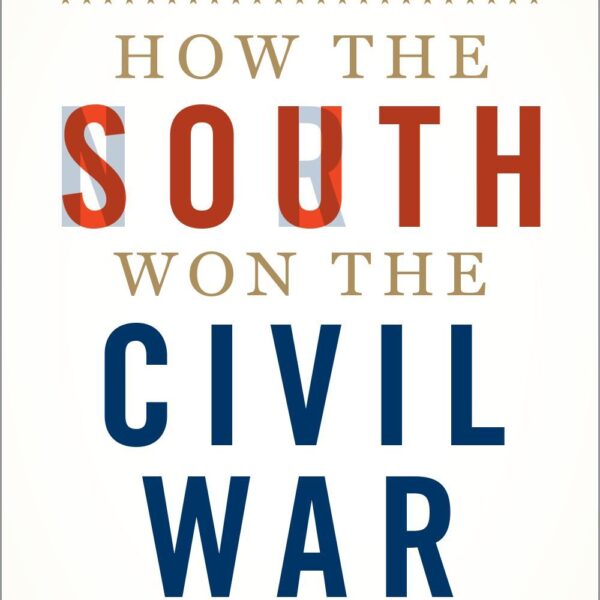From its birth as the Provisional Army of Tennessee in the spring of 1861 until the surrender of its last battered remnants at Bennett Place in April 1865, the Army of Tennessee—the Confederacy’s primary western theater field army—experienced little but failure. During its four-year existence it served under five different “permanent” commanders. Its high command proved to be a revolving door of incapable, egotistical, and insubordinate officers who were as passionate about fighting each other as they were the Yankees. It secured only one major battlefield victory—a quickly squandered triumph at Chickamauga. While the war’s western theater has yet to gain historiographical parity with the storied campaigns of the east, many capable scholars have sought to explain the collapse of the Confederate heartland.
Thomas J. Connelly, in his foundational two-volume history of the army [1967, 1971], concluded that the organization’s failure was due to its generals. Steven E. Woodworth’s Jefferson Davis and His Generals [1990] added the Confederate president to the list of those responsible, while Richard M. McMurry’s comparative study [1996] revealed that, among other things, the lion’s share of West Point, Virginia Military Institute, and the Citadel graduates from the South served in Robert E. Lee’s Army of Northern Virginia—thus depriving the western army of skilled, lower level officers. While Daniel agrees that leadership quality deserves ample blame, he convincingly shows that myriad other circumstances contributed to the army’s ultimate failure.
From the army’s inception, its leaders made foolish decisions. Tennessee Governor Isham Harris, commander of the provisional state army, appointed officers for a number of reasons—none of which were military experience or ability. “Wealth and prominence,” shows Daniel, “served as the basis for the appointments of most of the Tennessee colonels—there were nine physicians and forty lawyers” (2). The army’s early nucleus of officers was thus characterized by nepotism, cronyism, and political concessions. More than the high-command hampered the army in its infancy. Nationalism, white-supremacy, religion, and hatred of the North provided a measure of institutional unity. However, the provisional army, like its namesake state, was rife with sectionalism that hampered the emergence of an esprit de corps. The army was also tasked with defending a massive territory containing numerous navigable rivers that made avenues of invasion for the Union armies. These early handicaps, shows Daniel, “helped shape the army’s identity and would ultimately contribute to an army conquered” (13).
As the war progressed, the army was continually weakened by manpower shortages. Whether it be due to death, maiming, capture—or the revelation of their own ineptitude—colonels, captains, and lieutenants fared poorly in battle. This took its toll on an increasingly weary army. “By late 1862,” for example, “57.4 percent of all traceable infantry colonels . . . had no prewar formal training” (59). Simultaneously, the army was suffering from a lack of soldiers. Voluntary enlistments plummeted as the war went on, and the army relied increasingly on conscripts who were more prone to desertion and disobedience. Daniel finds that desertions were further spurred by inconsistent punishments. Captured deserters could suffer a literal kick in the pants or be executed in a public ritual intended to shame the offender and instill fear and obedience in bystanders.
The backbiting and chaos within the high-command, especially during Braxton Bragg’s tenure, receives ample coverage too. As in the rest of the book, Daniel offers nuanced conclusions showing that responsibility rested on numerous flawed shoulders. Bragg was vacillatory when he should have been decisive, and he expelled more energy attacking his enemies within the army than he did enemies without. Leonidas Polk exhibited insubordination that would have been inconceivable in other armies, while William J. Hardee was sometimes more focused on his romantic life than with his command responsibilities. And Jefferson Davis, the one person with the unambiguous authority to intercede and eliminate such issues, failed to do so.
While Daniel acknowledges that Robert E. Lee may have been able to put an end to the command chaos, he argues that the west’s challenges may have been too legion for any single commander. “By 1863,” the author points out that, “on a daily basis, the Army of Tennessee required 35,000 pounds of pork, 85,500 pounds of meal, 3,500 pounds of rice, 1,400 pounds of soap, 350 gallons of vinegar, 522 gallons of molasses, and 44 bushels of salt” (213). Unfortunately for the soldiery, the army’s logistical support network, especially the Nashville & Chattanooga Railroad, proved inadequate; hungry and footsore soldiers rarely have high morale. Lee might have brought Polk to heel, but even he would not have been able to make the trains run on time. In addition to internal problems, Connelly makes it clear that Ulysses Grant, George Thomas, William Sherman, William Rosecrans, and other federal officers deserve some credit for the Army of Tennessee’s defeat. Thus, the army ultimately succumbed to the Union, geography, logistics, and itself.
While explaining the army’s eventual collapse is Daniel’s primary purpose, he also analyzes its longevity and tenacity. That the army was able to march into battle at Nashville in December 1864 after suffering years of defeats, privations, and command changes is indeed remarkable. As with his explanation for why the army failed, Daniel provides several factors that contributed to its perseverance. Stunted as it may have been, a brotherhood—built on shared sufferings, commitment to slavery and secession, and a desire to defend home and family—emerged among the soldiers, albeit primarily at the brigade and regimental level. Two revivals spurred morale at opportune times to keep the men motivated and convinced of God’s favor. Non-battlefield “victories,” such as Joseph E. Johnston’s assumption of command in the wake of Chattanooga and the army’s destruction of Sherman’s supply line after the fall of Atlanta, provided temporary catalysts of hope. As the Army of Tennessee marched toward its own destruction at Franklin and Nashville, it did so with the conviction that victory was still possible.
Perhaps Daniel’s most impressive accomplishment is his ability to seamlessly weave together narrative, analysis, and historiography. During Daniel’s discussion of the Atlanta Campaign, for example, readers are provided the author’s own arguments, a clear overview of the army’s retreat from Dalton, and the conclusions of McMurry, Stephen Davis, Albert Castel, and Earl J. Hess. The author and the press also deserve credit for the inclusion of numerous photographs, maps, and tables—the latter providing important quantitative evidence to buttress Daniel’s arguments. In the wake of Chickamauga, for example, Bragg and the War Department instituted a series of transfers throughout the western theater. While Bragg supported some of these decisions, such as Longstreet’s Corps being dispatched to Knoxville after Chickamauga, a table reveals that these decisions led to a net loss of roughly 7,200 soldiers for the Army of Tennessee (233). These units would be sorely missed in the coming campaigns.
Daniel posits that if Robert E. Lee’s Army of Northern Virginia came to represent “the vitality of the Confederate States,” then the Army of Tennessee “came to represent the frailty of the Confederacy” (xii). Conquered is an outstanding addition to Civil War literature. It exists as a convincing original argument, a comprehensive historiographical essay, and a compelling narrative. More than being essential reading regarding the Army of Tennessee and the western theater, it is a powerful addition to the vast literature attempting to explain why the Confederacy lost the war.
Robert L. Glaze teaches history courses for Georgia Military College and Lincoln Memorial University. He is currently revising his manuscript, Experiencing Defeat, Remembering Victory: The Army of Tennessee in Civil War Memory.





